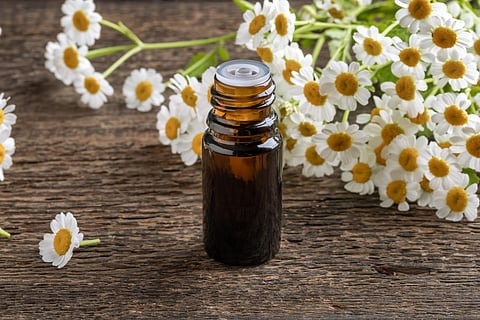Feverfew (Tanacetum parthenium ) is a relative of the daisy, marigold, and dandelion. The name is derived from the Latin word febrifugia, or fever reducer, and feverfew has been used for that purpose since the first century. Historically, the herb has also been used to treat headache, arthritis, menstrual irregularity, and stomachache.
What is it good for?
Some studies indicate that feverfew may help prevent migraines or make them less severe. A study found that feverfew decreased both the number and frequency of migraines, but other studies have found little effect. Researchers caution that not enough research has been done yet to prove without a doubt that feverfew is effective. Although studies show feverfew to have anti-inflammatory properties, human studies have not shown it to be effective for treating arthritis.
How does it work?
Researchers used to believe the primary active ingredient in feverfew is a compound called parthenolide. Parthenolide is believed to have anti-migraine, anti-inflammatory, and anti-tumor properties. However, feverfew extract containing the standard formula of .2 percent parthenolide was not effective in one human trial. Other compounds in feverfew may also help combat migraines.
How safe is it?
Studies show that between 7 and 18 percent of people who chew fresh feverfew leaves develop mouth sores, and a few have also complained of irregular heartbeat, constipation, stomachache, nausea, and dizziness. People sensitive to chamomile, ragweed, or yarrow may have an allergic reaction to feverfew. If you have any unpleasant side effects, stop using the herb. Remember that herbs can be powerful drugs and should be taken with caution. Feverfew may interact with blood-thinning medications like warfarin and aspirin and increase the risk of internal bleeding. Pregnant and lactating women and young children should not take feverfew. If you're considering using the herb regularly, let your doctor know.
What's the best way to take it?
If you have no unpleasant reaction, you can simply chew one to four fresh or dried feverfew leaves daily. Look for them in health food stores. If you prefer tablets or capsules, ask an herbalist, naturopath or pharmacist to recommend a reputable brand made with dried feverfew leaves. Feverfew extracts might not work.
References
de Weerdt CJ, Bootsma HPR, Hendriks H. Herbal medicines in migraine prevention; randomised couble-blind placebo-controlled crossover trial of a feverfew preparation. Phytomed 1996;3(3):225-230.
Awang DV. Parthenocide: demise of a facile theory of feverfew activity. J Herbs Spices Med Plants;5:95-8.
Pittler MH, et al. Feverfew for preventing migraine. Cochrane Database Syst Rev;(3):CD002286.
Abebe W. Herbal medication: potential for adverse interactions with analgesic drugs. J Clin Pharm Ther.;27(6):391-401.
Diener HC, et al. Efficacy and safety of 6.25 mg t.i.d. feverfew CO2-extract (M16-99) in migraine prevention: a randomized, double-blind, multicentre, placebo-controlled study. Cephalagia: An International Journal of Headache; 25(11): 1031-1041.
National Center for Complementary and Alternative Medicine. Feverfew.
Natural Medicines Comprehensive Database. Feverfew.


